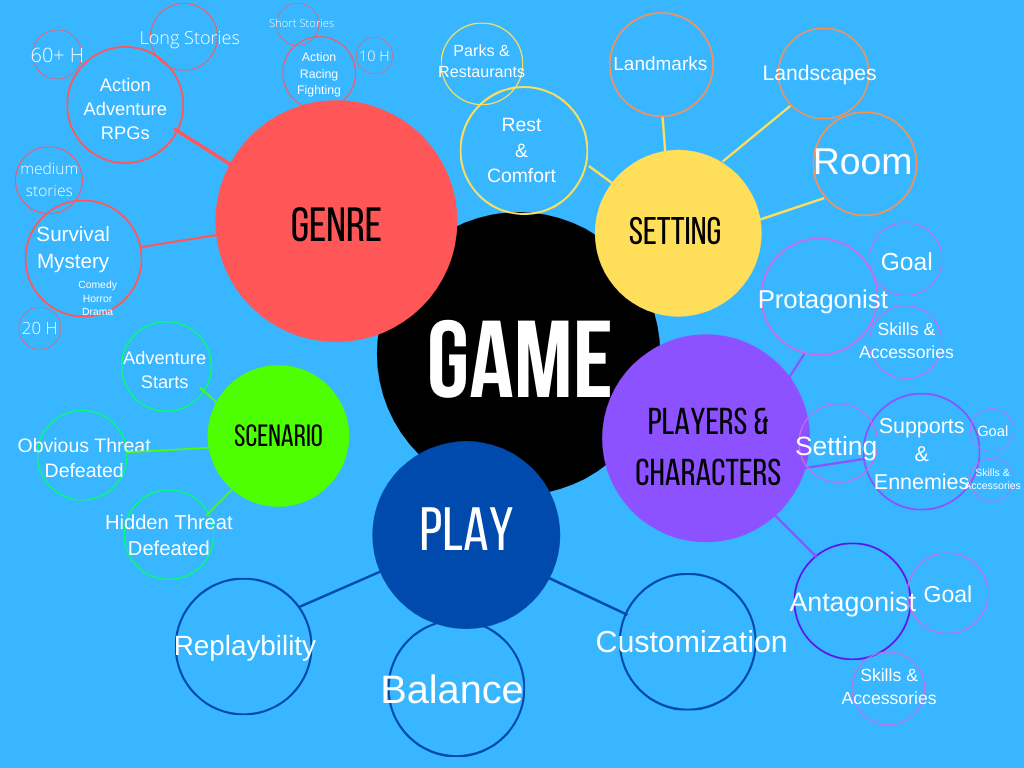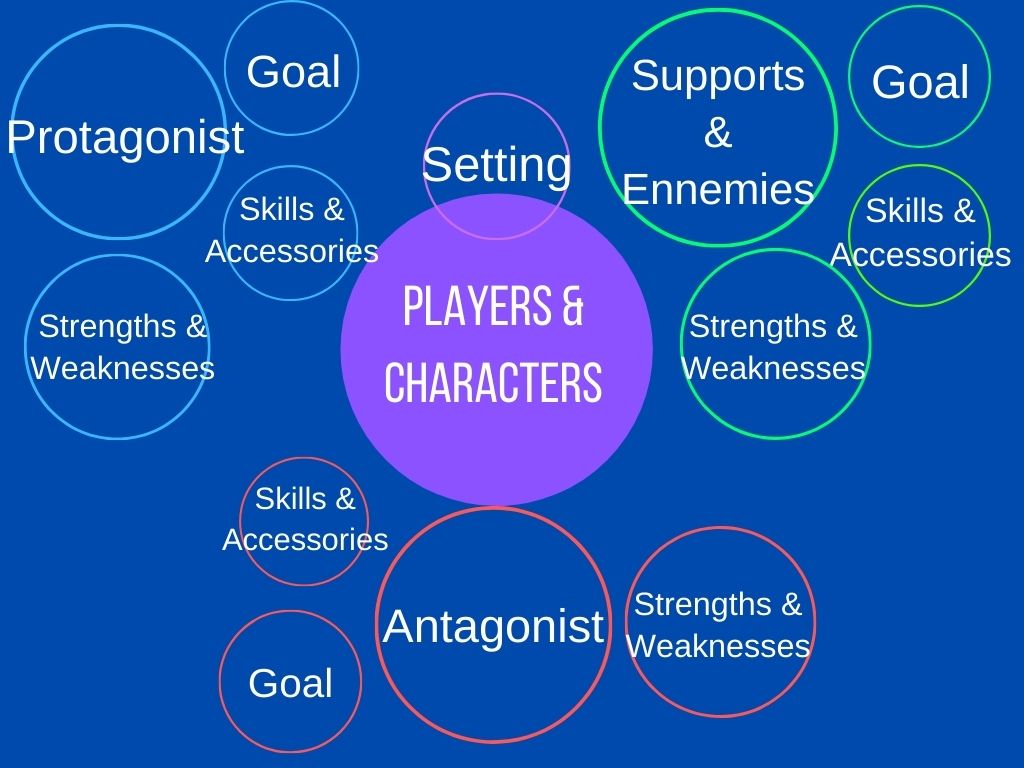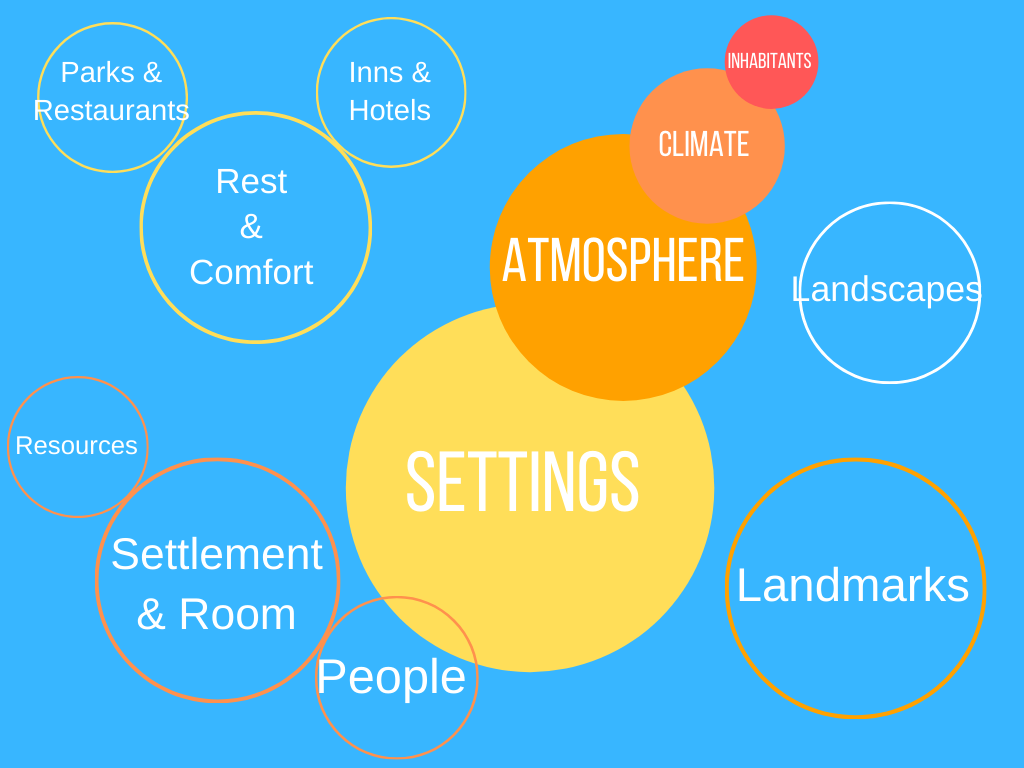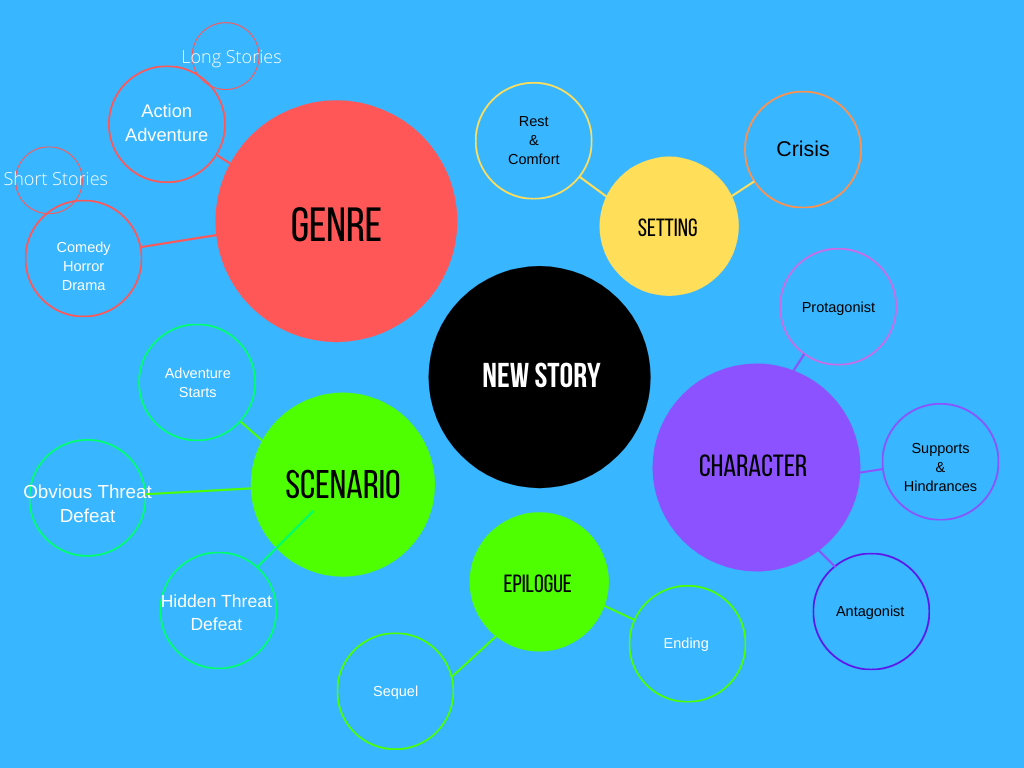
So, play.
- You want to start a story but have no procedure.
- What about a clean & straightforward one?
- Do you want to write a 100 pages in a month?
- Or 30 pages in a week?
- How many Characters do you need?
- 3 to 6
- How many Environments/Settings?
- 1 to 5
- Single location
- How many Chapters?
- 10
How many Characters?

- 3 characters will allow to develop deep interpersonal interactions easily.
- 1 Protagonist, 1 Antagonist, 1 Support is a triangular structure easy to identify for the public.
- You could also go for 1 Protagonist & 2 Antagonists.
- In this type of scenario the Support becomes an Antagonist later in the story, after chapter 6.
- The 2 Antagonists may or may not pursue the same goal.
- The 1st chapter will be seen from the Protagonist’s point of view.
- The Support gives her support to the Protagonist in the 2nd chapter.
- The Antagonists causes the crisis in the 3rd chapter.
- And there your story kick-starts.
- This is structure is predictable and therefore clear.
- If you want more complexity & more diversity, go for 6 characters.
- We’ll propose you the 3 simplest configurations:
- 1 Protagonist, 2 Antagonist, 3 Support – The Pyramid Structure.
- All the cast helps the Protagonist’s progression to the top.
- Recommended for Adventure or Drama.
- 1 Protagonist, 1 Antagonist, 2 Protagonist’s Support, 2 Antagonist’s Support – The Death-match Structure.
- 1 Team against another, winner takes all.
- Recommended for Action or Comedy.
- 1 Protagonist, 5 Antagonist – The Survivor Structure.
- The inverted Pyramid: the cast will hinder the Protagonist.
- Recommended for Horror or Action.
- The recommendations per genre are here to simplify the creation process.
- They should not inhibit your experimentation.
- If you want to try a Survivor Structure in a Comedy or Drama setting do so.
How many Environments/Settings?

- How many settings are needed in a story?
- 1 to 5.
- Which settings are needed in a story?
- You will need, a resting place, a gathering place, a confrontation place, an aftermath place & a separation place.
- Generally you will find settings like:
- A Café/a Restaurant/a Park
- A House/Apartment/Basement
- A Grand place/Main square/City Center/Agora
- A Hostile setting, Urban or Natural
- A Welcoming setting, Urban or Natural
- Any setting can serve as a Conflict space, a Relaxation space or a Reflection space.
- Again, experiment to find out what suits you the most.
- If you want to spend the whole store in a single location.
- A single house, can gather all these places.
- Make the kitchen a gathering place, the living room a confrontation place, the bedroom an aftermath place & the gardens a separation place.
- Any combination will not work out as smoothly, yet all should be tried.
- A single room can host many feelings.
- Up to chapter 4 she is a place of gathering & celebration.
- Between chapter 5 & 6 she becomes the locus of fear.
- From 7 to 9 tension dissipates, letting the consequences unfold.
- In the 10th, she shelters the End.
How many Chapters?
- A 10 chapter structure will allow you to keep control over your story.
- It allows a better Visualization than a linear summary.
- Odd Chapters establish a Tension.
- Even Chapters lead to a Resolution.
- Chapter 1 – Introduction/Arrival at location
- We are Setting the Atmosphere
- It is a Call to adventure
- It can be a Ask for help
- Chapter 2 – Obvious menace
- Meet early threat
- The early threat may be the main antagonist, a secondary antagonist or a non-human element
- It will be the direct source of issues of the people asking for the Protagonist’s help
- Chapter 3 – 1st Crisis
- The Protagonist defeats the early threat
- Chapter 4 – In between tension
- The Protagonist anchors her relationships with friends & foes
- She begins to gather resources
- Chapter 5 – Discovery
- The Protagonist Discover Hidden threat/menace
- Chapter 6 – 2nd Crisis
- The Hidden menace reveals itself
- It Destroys something precious to Protagonist
- It maybe the main antagonist or a non-human element
- Chapter 7 – 2nd Anchor
- Much like chapter 4, this is a resolution chapter
- This is chapter serves as a recovery from 2nd crisis
- The Protagonist may pass though a stage of Self Rediscovery
- Chapter 8 – Confrontation
- The protagonist confronts the Hidden menace
- Chapter 9 – Last crisis
- In this chapter the protagonist & supporters Destroy/Vanquish the Hidden menace
- If they do, it results as a Success
- But Failure is also a valid option if it serves the theme
- Failure may serve to develop the story further in a sequel
- Chapter 10 – Epilogue
- The Epilogue, can help to clarify the ending
- The Epilogue, also ensure the transition to a sequel
- The Epilogue, allows the public to part with the characters
